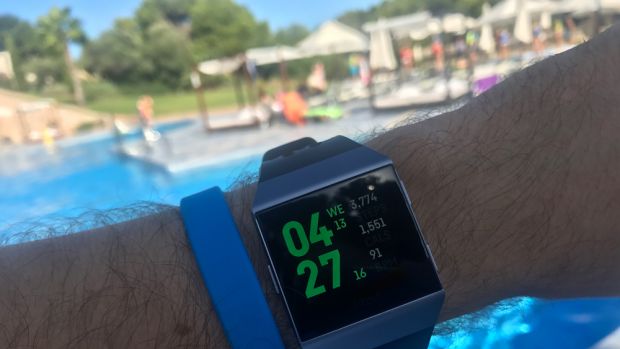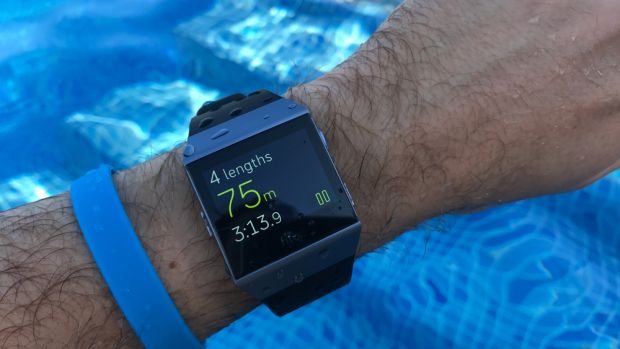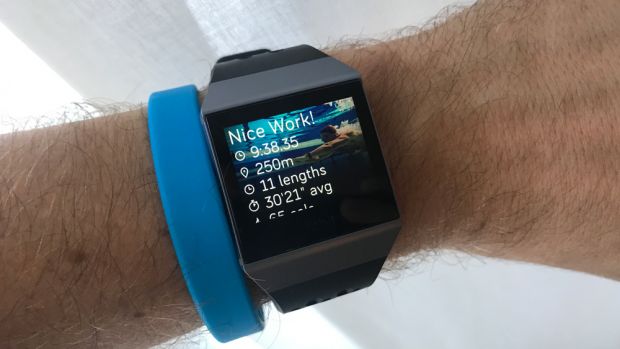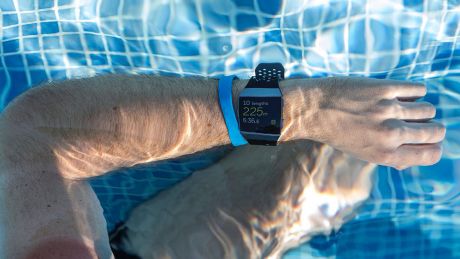You can trust Coach
SAFETY RECALL FOR FITBIT IONIC 2ND MARCH 2022
Fitbit has issued a safety recall for the Fitbit Ionic. An email to customers reads: "After a thorough investigation, we determined that in very limited instances, the battery in the Ionic smartwatch can overheat, posing a burn hazard. Customer safety is always Fitbit’s top priority. We’re offering a refund to Fitbit Ionic customers."
More information can be found on web page Safety Recall of Ionic Smartwatches.
This article was first published 27th September 2017
The stunning setting of Cala Mondrago in the south-eastern corner of the Balearic island of Mallorca is the perfect location to be active, even if the temptation to spend most of your time lying on the Mediterranean beaches is tough to resist. If you can haul yourself off the sand, however, you’ll find acres of stunning natural beauty to run, ride and swim around in, all of which makes it the ideal spot to test out Fitbit’s new top-end wearable and first smartwatch – the Ionic.
From swimming, spinning and running, to yoga, mountain biking and circuit training, we put the smartwatch through its paces on the beach, in the pool and in the mountains to get a true feel for those much-touted new features, including its advanced SpO2 sensor for improved heart rate tracking and water resistance for up to 50 metres.
Here is our hands-on preview of the Ionic before its official launch on 1st October (£299, buy on fitbit.com) – look out for our full in-depth review in the coming weeks.
Sign up for workout ideas, training advice, reviews of the latest gear and more.
Running With The Fitbit Ionic
Our first workout of the day using the Ionic was a quick run, mainly to get a feel for the watch during some straightforward exercise. The first thing we noticed is that the Ionic is one of the most comfortable wearables Fitbit has made. It fits securely and comfortably on the wrist, feeling more ergonomic than previous Fitbit trackers, probably owing to its new manufacturing technique called “nano moulding”. This process uses plastic and metal together in the watch body for a lighter design. It also means it curves slightly to hug your wrist, so you forget it’s even there no matter what you’re doing.
Starting a run on the Ionic is easy enough – simply select Running from the Exercise app by swiping left from the home screen, tap go, wait for the GPS to lock on, and go. We found the built-in GPS could take a couple of minutes to fire up, though and waiting for this to kick in before we began our run was a little irritating – but it’s an issue anyone who’s ever used a GPS watch will be familiar with.
RECOMMENDED: Best Running Watche
A nifty feature though is the device’s new Run Detect tech, which will track your runs automatically without you having to press a button. That includes GPS, which will kick in by itself a couple of minutes after you get going. It’s impressive and goes beyond the automatic tracking available on Fitbit’s other devices.
HIIT Workouts With The Fitbit Ionic
Choose a standard “workout” exercise from the list before beginning an exercise like circuit training, for example, where you’re more likely to be stopping and starting, and the Fitbit Ionic will track your heart rate continuously. We are big fans of the heart rate sensor, which displays your BPM on the screen clearly and was accurate both when we were exercising and when we hit the beaches for some well deserved R&R.

Thanks to its tough scratch-proof Gorilla Glass touchscreen we found you can really get down and dirty in your workouts – even manic HIIT sessions – without worrying about damaging the display. Brightness is also high enough to see all the onscreen details even in direct sunlight, and this dims automatically when you go inside to save on battery life.
Cycling With The Fitbit Ionic
Tracking cycling with the Ionic works in the same way as running and you get similar settings at your disposal including turning on auto-pause, setting up data cues and customisable screens to display your most wanted stats during a ride.
The major bugbear here, as it was with running and other workouts on the Fitbit Ionic, is that once you’ve completed your session, you can’t view the details on the smartwatch itself. You’ll get a snapshot of your workout summary right after your exercise ends, but this will disappear once you press “done”, and you’ll have to sync the watch with the app and view them on your phone to see your ride in detail.
RECOMMENDED: Cycling Route Planners
Nevertheless, we found that the Ionic’s GPS tracked our cycle up and down the hilly terrains around Playa Mondrago with impeccable detail, providing us with the total distance, mapped routes, heart rate and total calories burned.
Swimming With The Fitbit Ionic

An especially exciting new addition on the Ionic is waterproofing and its dedicated swimming mode, which Fitbit claims is more accurate than its competitors in accurately tracking your laps of the pool.
We found the Ionic was able to work perfectly underwater and give us onscreen details of our exercise with its brightly lit display as we swam, updating the display with the number of lengths completed each time we stopped to take the next length.

The Ionic’s waterproof design also extends to open-water swimming, but unlike the Apple Watch Series 2 or Garmin Forerunner 935, there is no dedicated function for the open water and GPS won’t work when swimming.
In the pool, however, it works a treat. As with running and cycling, detailed stats are available on the app once you’ve completed your swim, including lap count, duration, a breakdown of calories burned and your heart rate data.

RECOMMENDED: Best Waterproof Fitness Trackers For Swimmers
Using The Fitbit Ionic As A Smartwatch
The Ionic isn’t a device that becomes irrelevant once you’ve finished your workout. It’s brimming with other features, starting with its NFC payment capabilities. The Fitbit Pay platform built into the Ionic means you can make purchases without your phone or wallet and will include major credit card companies like American Express, MasterCard and Visa.
While this would be perfect for an emergency pit stop at the supermarket on a long run, the feature wasn't working properly when we attempted to buy some sports gear. However, the Fitbit Ionic’s firmware was still a beta version of the software, so not all of the features were working as they will on the final version when it is launched in October.
So far the Ionic only supports those payment methods on three major banks in Europe – HSBC, Santander and Capital One. Fitbit says more banks will be added over the coming months.
RECOMMENDED: Best Fitness Smartwatch
Battery Life
One of the most crucial questions still remains unanswered: battery life. How long will the Ionic last before you need to charge it again? This figure can make or break a smartwatch these days.
After using the watch for a good 24 hours, we were impressed with the Ionic’s stamina. Obviously this depends on how much you use it for measuring workouts throughout the day, but after a full charge overnight and unplugging it at 7am, by 5pm it was still at an impressive 64%, and that was after four back-to-back, varied workouts.
Four days after the charge with minimal use, the Ionic was at a respectable 31%, having drained by around 10 percentage points a day for the three days it was used without tracking a workout. Naturally battery life depends on how much you use the Ionic, but it easily outshines the Apple Watch, for example, which always requires a nightly top-up.
The Ionic is Fitbit’s strongest fitness tracker yet, despite a few annoyances such as the inability to view past workouts on the watch itself. With its square clock face and minimal, clean design, it’s subtle in looks but abundant in useful features.
At £299 the Ionic is priced in line with the latest sporty smartwatches, including the Apple Watch Series 3 (without cellular connectivity) and the Garmin Vivoactive 3. The Ionic might not displace the Apple Watch from top spot in the smartwatch market, but it’s packed with features, is able to track all the workouts you can throw at it, and boasts a beautiful, comfortable design that will get heads turning at the gym for all the right reasons. £299, buy on fitbit.com

